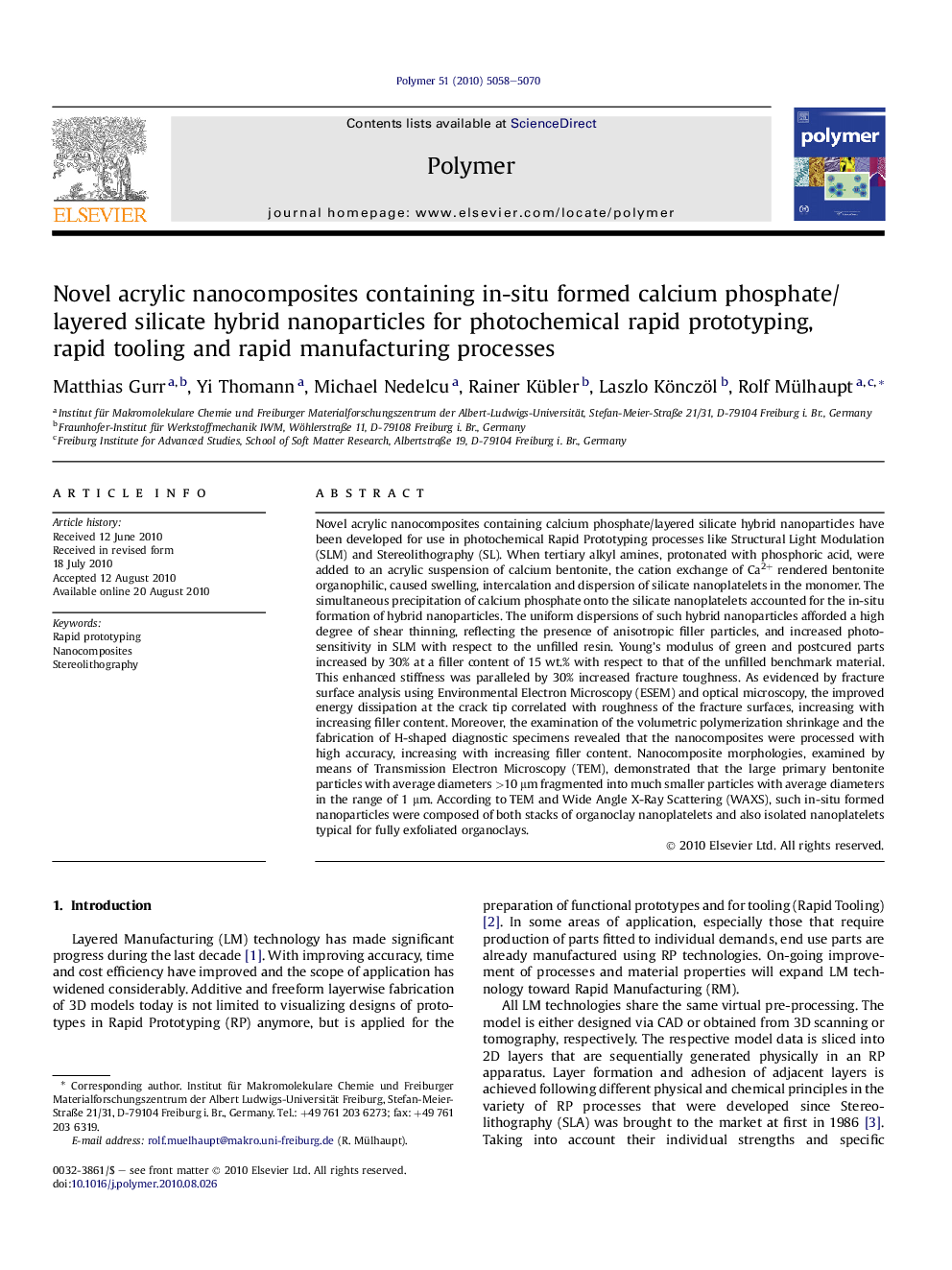| کد مقاله | کد نشریه | سال انتشار | مقاله انگلیسی | نسخه تمام متن |
|---|---|---|---|---|
| 5184788 | 1381057 | 2010 | 13 صفحه PDF | دانلود رایگان |

Novel acrylic nanocomposites containing calcium phosphate/layered silicate hybrid nanoparticles have been developed for use in photochemical Rapid Prototyping processes like Structural Light Modulation (SLM) and Stereolithography (SL). When tertiary alkyl amines, protonated with phosphoric acid, were added to an acrylic suspension of calcium bentonite, the cation exchange of Ca2+ rendered bentonite organophilic, caused swelling, intercalation and dispersion of silicate nanoplatelets in the monomer. The simultaneous precipitation of calcium phosphate onto the silicate nanoplatelets accounted for the in-situ formation of hybrid nanoparticles. The uniform dispersions of such hybrid nanoparticles afforded a high degree of shear thinning, reflecting the presence of anisotropic filler particles, and increased photosensitivity in SLM with respect to the unfilled resin. Young's modulus of green and postcured parts increased by 30% at a filler content of 15 wt.% with respect to that of the unfilled benchmark material. This enhanced stiffness was paralleled by 30% increased fracture toughness. As evidenced by fracture surface analysis using Environmental Electron Microscopy (ESEM) and optical microscopy, the improved energy dissipation at the crack tip correlated with roughness of the fracture surfaces, increasing with increasing filler content. Moreover, the examination of the volumetric polymerization shrinkage and the fabrication of H-shaped diagnostic specimens revealed that the nanocomposites were processed with high accuracy, increasing with increasing filler content. Nanocomposite morphologies, examined by means of Transmission Electron Microscopy (TEM), demonstrated that the large primary bentonite particles with average diameters >10 μm fragmented into much smaller particles with average diameters in the range of 1 μm. According to TEM and Wide Angle X-Ray Scattering (WAXS), such in-situ formed nanoparticles were composed of both stacks of organoclay nanoplatelets and also isolated nanoplatelets typical for fully exfoliated organoclays.
Journal: Polymer - Volume 51, Issue 22, 15 October 2010, Pages 5058-5070